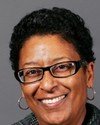There are things that we do to work on issues like that. Actually, I have to tell you, from a national level, that most of these things happen at the regional or provincial levels. For instance, I come from Alberta, so I can speak about the things there that I really know well. We sit on the chief of police's hate crimes committee, which helps develop awareness so that we can let our people know how they can access the things they need when a hate crime is perpetuated against them. Most of the time our community is desensitized; they believe racism is part of their everyday life, so they don't respond to it. So we're trying to change these things.
We are involved and proactive in the area of human rights, and we have tried to bring awareness about human rights and the violations of some of those rights that have gone on. But the biggest challenge we have—and it remains so today—is that a lot of the racism is actually done in systemic ways, where policies and things we're not involved in developing are actually developed based on racist values and insights. So it's a matter of us being able to identify and put our finger on those things to help work towards changing them. I mean, when we see obvious things, such as when they used the face of an aboriginal woman for target practice in Saskatoon, we were able to bring public attention to that and help change that. It wasn't a picture of an aboriginal woman, but it was somebody dressed to appear as an aboriginal woman, which they used for target practice in the police gun ranges in Saskatchewan.
So there are things like that, which we continually work to change, but it's hard to work inside those institutions to find exactly where those policies are that need to be changed. Often we meet with some resistance to changing them, because the one thing I've learned about Canada is that nobody wants to admit to racism. As long as nobody says there is racism, it can exist. So it's really challenging to go and do that later.




